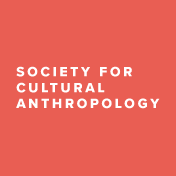
On September 16, 2022, Mahsa Zhina Amini, a twenty-two-year-old woman from the Iranian province of Kurdistan, died in Tehran due to injuries incurred while in police custody. She was arrested three days earlier by the “morality police” for allegedly violating the state-enforced Islamic dress code. Her death, and the state response, angered many observers in Iran and around the world. It became the occasion of the Woman, Life, Freedom movement and its demands for systematic change. This Hot Spots series is a contribution to what we see as a critical anthropology of the Woman, Life, Freedom movement. Now some months after its emergence, our aim is to move beyond the initial framing of the protests in the discourses of the Global North. These discourses tend to treat “women,” “Islam,” and “Iran” as uniform and timeless units. They narrate the movement as the awakening of “Iranian women” against “the regime.” In contrast, the curated essays move closer to the lived realities and everyday struggles for recognitions that are born in the history of revolutionary Iran from the late nineteenth century to the present. They offer theorizations of the Woman, Life, Freedom movement that are internal to Iran as, at once, a geopolitical and imaginative terrain of language and debate with specific histories and traditions. In contrast to the Manichean framing of “women vs. the state,” we suggest that the Woman, Life, Freedom movement is a manifestation of the incapacitation of patriarchal “laws” of Iranian society—from the laws of the family to those of religion and the state—and that this unveiling in turn exposes the diversity of Iranian society in Iran and the diaspora.
Posts in This Series

Far Away, by Your Side: An Introduction and a Remembrance
Towards a Critical Anthropology of Woman, Life, Freedom On September 16, 2022, Mahsa Zhina Amini, a twenty-two-year-old woman from the Iranian province of Kurdi... More

Rights in the Age of Benevolence: Women's Revolutionary Uprisings in Iran
Women and the Islamic Republic Since tragic death of Mahsa Zhina Amini in September 2022, observers have attempted to make sense of the uprisings and to identif... More

From the Perspective of Kinship: Violence as Unbearable Closeness
The protests in Iran have foregrounded the opposition between the individual and the state. Both on the street and in the media, the figure of the individual—sp... More

Crossing the Red Lines
A common image of the Woman, Life, Freedom movement that started last September in Iran portrays women taking off their veils and burning them. In France, newsp... More

Ambiguous Commitments: The Ambivalences of “Opposition” in Iran to the Women, Life, Freedom Movement
I first met Ali in 2015. He was then a member of the Student Basij (Basij-e Dāneshjooii, literally student mobilization), a student organization that was a part... More

A Global Rap-e Farsi Rises to Speak Truth to Power in Iran
When Toomaj Salehi released his track “Soorakh Moosh” (Rathole) in the summer of 2021, it seemed surreal that a rapper situated in Iran would publish such a ris... More

Woman, Art, Freedom
Following the tragic murder of Mahsa Zhina Amini in September 2022, Iranian women took to the streets in large numbers to protest. Whether from an art backgroun... More

On Unity & Fragmentation in the Iranian Diaspora
Since its rapid growth after the 1979 Iranian Revolution, the Iranian diaspora has been marked by deep fragmentations along political, ethnic, religious, and ge... More

Of Common Pains and Common Dreams
Night One We went to S. and her partner’s place to watch Patricio Guzmán’s latest film: My Imaginary Country. Well, we were not there for the film per se. S. ha... More